1803
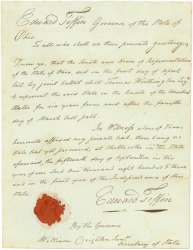
Congress passed an act "to provide for the execution of the laws of the United States within the State of Ohio," effectively admitting Ohio to the Union as the 17th state. In 1953, Congress established the date of Ohio statehood as March 1, 1803—the date that Ohio's state legislature met for the first time. The Buckeye State's first senators, John Smith of Cincinnati and Thomas Worthington of Chillicothe were seated in October.
1803

The senators drew lots to determine their class assignments. Senator Thomas Worthington drew Class 2, for the term to expire on March 3, 1807. Senator John Smith drew Class 3, for the term to expire on March 3, 1809.
1808
Senator John Smith resigned at the request of the Ohio legislature after being indicted with former vice president Aaron Burr on charges of conspiring to commit treason. In August 1807 the court acquitted Burr and the prosecutor dropped charges against Smith. By a margin of 19 to 10, the Senate fell one vote short of the two-thirds necessary to expel Smith.
1825

William Henry Harrison of Cincinnati became a U.S. senator, serving until May 20, 1828. On March 4, 1841, he would become the ninth president of the United States, but would serve for just one month. He died of pneumonia on April 4, 1841.
1825
William Henry Harrison became chairman of the Senate Committee on Military Affairs (today's Committee on Armed Services), serving until his resignation from the Senate in May of 1828.
1845

William Allen of Chillicothe became chairman of the Senate Committee on Foreign Relations. He resigned from the committee on June 14, 1846, after he disagreed with the terms of the Oregon Treaty as passed by the Senate.
1847

Senator Thomas Corwin of Lebanon, widely acclaimed as an orator, addressed his fellow senators recommending denial of President James K. Polk’s request for funds to conduct the Mexican War. Corwin’s remarks defending the right of free speech during wartime moved the entire nation.
1863

John Sherman of Mansfield became chairman of the Senate Committee on Agriculture (today's Committee on Agriculture, Nutrition, and Forestry). In the second session of that Congress (38th), beginning in December 1864, he became chairman of the Senate Committee on Finance, where he served until 1865, playing a major role in decisions related to financing the Civil War. He returned as Agriculture chair from 1865 to 1867 and as Finance Committee chair from 1867 to 1877.
1867

The Senate elected Benjamin Wade of Jefferson as president pro tempore. His duties took on special significance because, with the office of vice president vacant, he stood next in line of presidential succession.
1868
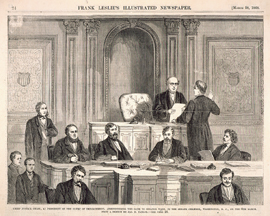
From March 30 to May 26, Chief Justice Salmon P. Chase, a former Ohio senator, presided at the Senate impeachment trial of President Andrew Johnson. With the office of vice president then vacant, the removal of Johnson would have made Senate President pro tempore Benjamin Wade president of the United States. Criticized for taking an active role in seeking Johnson’s conviction to advance his own political career, Wade lost out when Johnson won acquittal by one vote.
1873
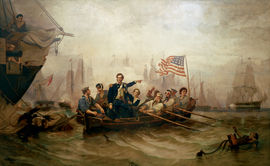
Ohio artist William Henry Powell completed his oil on canvas mural, “The Battle of Lake Erie,” for the head of the east stairway of the Capitol’s Senate wing. Powell modeled the work after his 1865 painting on the same subject placed in the rotunda of the Ohio statehouse in Columbus.
1879

Allen Thurman of Columbus became chairman of the Senate Committee on the Judiciary, a position he held until 1881.
1879
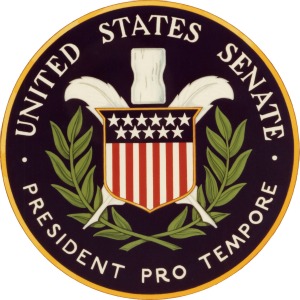
The Senate elected Allen Thurman as president pro tempore. He held the post until March 1881.
1880

The Ohio legislature elected Representative James A. Garfield of Mentor to a seat in the Senate with a term beginning on March 4, 1881. Garfield subsequently declined his Senate seat following his November 4, 1880, election as the 20th president of the United States.
1883

Congress passed the Civil Service Act, or Pendleton Act, sponsored by Senator George Pendleton of Cincinnati, which established a federal Civil Service Commission and substituted competitive civil service exams for the practice of hiring based on political patronage. The bill was enacted on January 16, 1883. The 1881 assassination of President James A. Garfield by a “disappointed office-seeker” inspired this landmark legislation.
1885
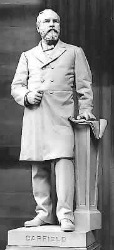
Sculptor Charles Niehaus completed work on a marble statue of former president James A. Garfield as one of Ohio’s two entries in the Capitol’s National Statuary Hall Collection. The statue is permanently placed in the Capitol’s Rotunda along with that of another Buckeye statesman, former president Ulysses Grant.
1885

The Senate elected John Sherman as president pro tempore. His duties increased following the November 25, 1885, death of Vice President Thomas Hendricks. Sherman held this post until February 26, 1887.
1886
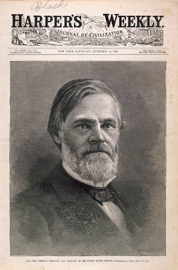
John Sherman became chairman of the Senate Committee on Foreign Relations, a position he held until 1893.
1886

The Senate resolved the contested 1884 election in Ohio of Henry B. Payne of Cleveland. Payne was seated.
1887
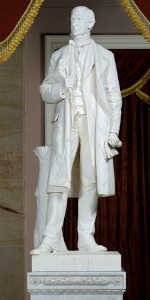
Sculptor Charles Niehaus completed work on a marble statue of former senator William Allen of Chillicothe as the second of Ohio’s two entries in the Capitol’s National Statuary Hall Collection.
1888
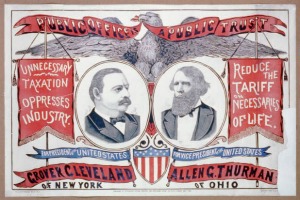
Former senator Allen Thurman lost his bid for vice president of the United States, on the ticket with incumbent president Grover Cleveland. They were defeated by Republicans Benjamin Harrison and Levi Morton.
1890
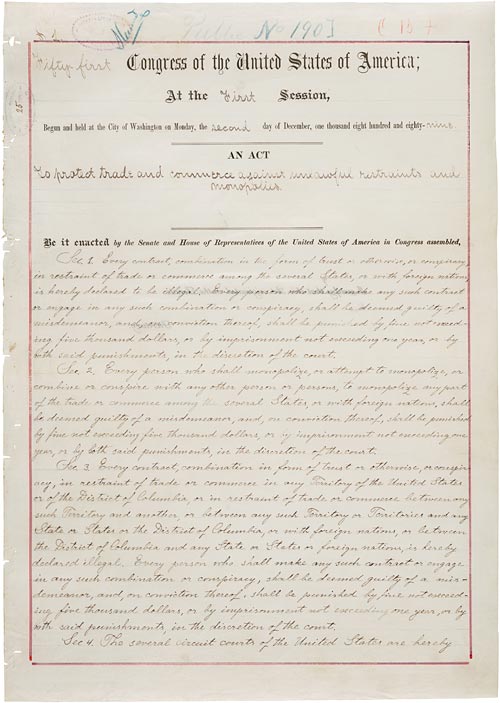
Senator John Sherman, preeminent leader of the Republican Party on economic issues, lent his name to two important laws, the Sherman Antitrust Act (July 2) and the Sherman Silver Purchase Act (July 14). The former sought to prevent business monopolies while the latter established a limited silver-purchase plan by the Treasury Department.
1899

The Senate resolved the 1897 contested election in Ohio of Marcus A. Hanna of Cleveland. Hanna was seated.
1900

Senator Joseph B. Foraker of Cincinnati delivered George Washington's Farewell Address on the floor of the Senate, a tradition dating to 1862.
1900

Sculptor Franklin Simmons’s marble statue of former president Ulysses Grant was unveiled in the Capitol’s Rotunda, joining that of another Buckeye statesman, former president James A. Garfield.
1906

Representative Theodore Burton of Cleveland published a two-volume biography of Senator John Sherman. Soon thereafter, Burton took the U.S. Senate seat once held by Sherman.
1909
Theodore Burton began his first Senate term while also serving as chairman of the National Waterways Commission and the National Monetary Commission. He continued in these posts throughout most of that term until 1912, despite concerns expressed about members of Congress serving in agencies whose appropriations they funded.
1914
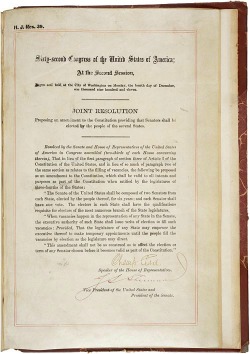
Warren Gamaliel Harding of Marion became Ohio's first directly elected senator, following the passage of the Seventeenth Amendment in 1913.
1920

Senator Atlee Pomerene of Canton delivered George Washington's 1796 Farewell Address on the floor of the Senate, a tradition dating to 1862.
1920

Warren G. Harding became the first sitting senator to be elected president of the United States. He defeated another Ohio resident, Democratic Party candidate James M. Cox of Dayton. Cox had represented Ohio in the House of Representatives and had served as Ohio's governor.
1924

Senator Frank B. Willis of Delaware County delivered George Washington's 1796 Farewell Address on the floor of the Senate, a tradition dating to 1862.
1929

Republican senator Simeon Fess was appointed Republican whip by Conference chairman and floor leader James Watson. Fess served as whip until 1933.
1929
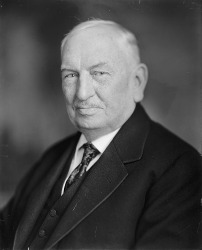
A funeral service for Senator Theodore Burton was held in the Senate Chamber. Burton, who was serving his second term in the Senate, died on October 28, 1929.
1939
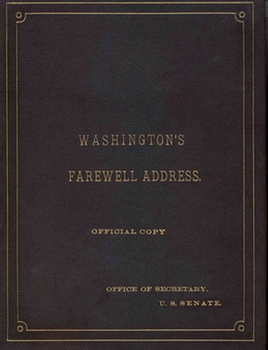
Senator Robert A. Taft of Cincinnati delivered George Washington's 1796 Farewell Address on the floor of the Senate, a tradition dating to 1862.
1944

Senate Republicans elected Harold Burton of Cleveland as their Conference secretary, a position he held through the end of that year.
1944

Governor and future senator John W. Bricker of Columbus was nominated for vice president of the United States on the ticket with Thomas Dewey. They lost to Franklin Roosevelt and Missouri senator Harry Truman.
1946
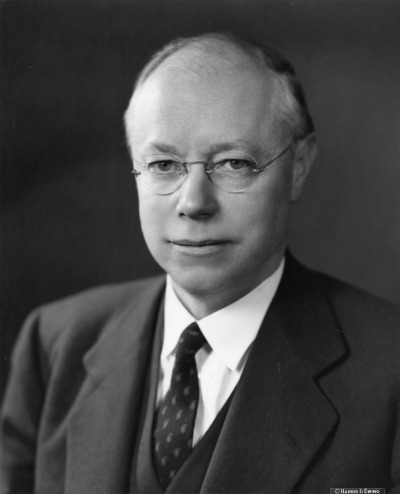
Senate Republicans elected Robert A. Taft as the first chairman of the newly created Senate Republican Policy Committee.
1947
Robert A. Taft became chairman of the Senate Committee on Labor and Public Welfare (today's Committee on Health, Education, Labor, and Pensions). He chaired the committee until January 10, 1949.
1947
Senator Robert A. Taft, known as “Mr. Republican,” sponsored the Taft Hartley Act in the Senate, achieving passage of the legislation over President Harry Truman's veto. The law set a number of controls on the activities of labor unions.
1953
John W. Bricker became chairman of the Senate Committee on Interstate and Foreign Commerce (today's Committee on Commerce, Science, and Transportation), serving until January 11, 1955.
1953
The Senate voted to approve legislation retroactively ratifying Ohio's state constitution, a step Congress had failed to take in 1803, and admitting Ohio to the Union as of March 1, 1803, rather than the previously accepted February 19th date.
1954
The Senate defeated a constitutional amendment introduced by Senator John W. Bricker that would have weakened presidential authority in foreign affairs and limited the federal government's ability to enter into treaties. Requiring a two-thirds vote for adoption, the amendment failed by a single vote, 61-30.
1959
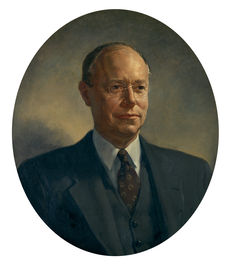
A special Senate committee, chaired by Senator John F. Kennedy, unveiled a porthole portrait of Robert A. Taft as one of the five most significant senators in history, to be displayed in the Senate Reception Room.
1959
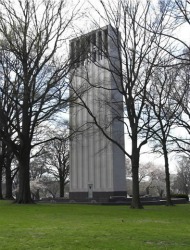
President Dwight Eisenhower joined congressional leaders and 5,000 onlookers to dedicate the Taft Memorial Bell Tower in honor of former Senate Majority Leader Robert A. Taft. The carillon includes 27 matched bronze bells. A 10-foot bronze statue of Taft stands at the tower’s base.
1962
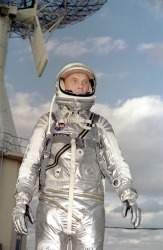
Future senator John Glenn lifted off into space aboard his Mercury Atlas (MA-6) rocket and became the first American to orbit the Earth. After orbiting the Earth 3 times, Friendship 7 landed in the Atlantic Ocean 4 hours, 55 minutes and 23 seconds later.
1987
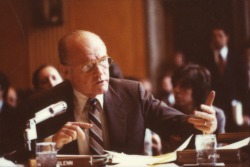
John H. Glenn, Jr., of Columbus became chairman of the Senate Committee on Governmental Affairs (today's Committee on Homeland Security and Governmental Affairs). He held that post until January 1995.
1998
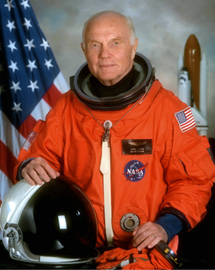
Senator John Glenn orbited the earth on Space Shuttle Discovery. He returned November 7, completing a journey of 3.6 million miles. As a representation of his Senate service, he took on his voyage a copy of Thomas Jefferson's Manual of Parliamentary Practice, which he presented to Senate Democratic Leader Thomas Daschle on December 3, 1998.
1999
With 24 years of Senate service, John Glenn became Ohio’s second longest-serving senator (after John Sherman) at the time of his retirement.
1999

Senator George V. Voinovich of Cleveland delivered George Washington's 1796 Farewell Address on the floor of the Senate, a tradition dating to 1862.
1999
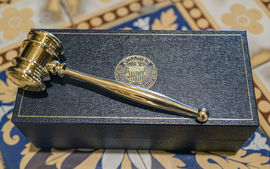
George V. Voinovich received the Golden Gavel Award for presiding over the Senate for 100 hours in a single session.
2003
George V. Voinovich became chairman of the Senate Select Committee on Ethics, a position he held until 2007.
2007

Senator Sherrod Brown of Lorain received the Golden Gavel Award for presiding over the Senate for 100 hours in a single session.
2012
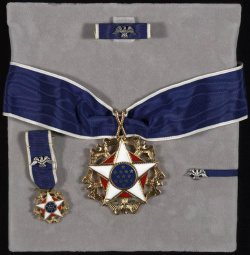
Former senator John Glenn received the Presidential Medal of Freedom, given by the president of the United States to honor individuals who have made great contributions to either the United States or the world. To date, 28 senators have received the award.
2016
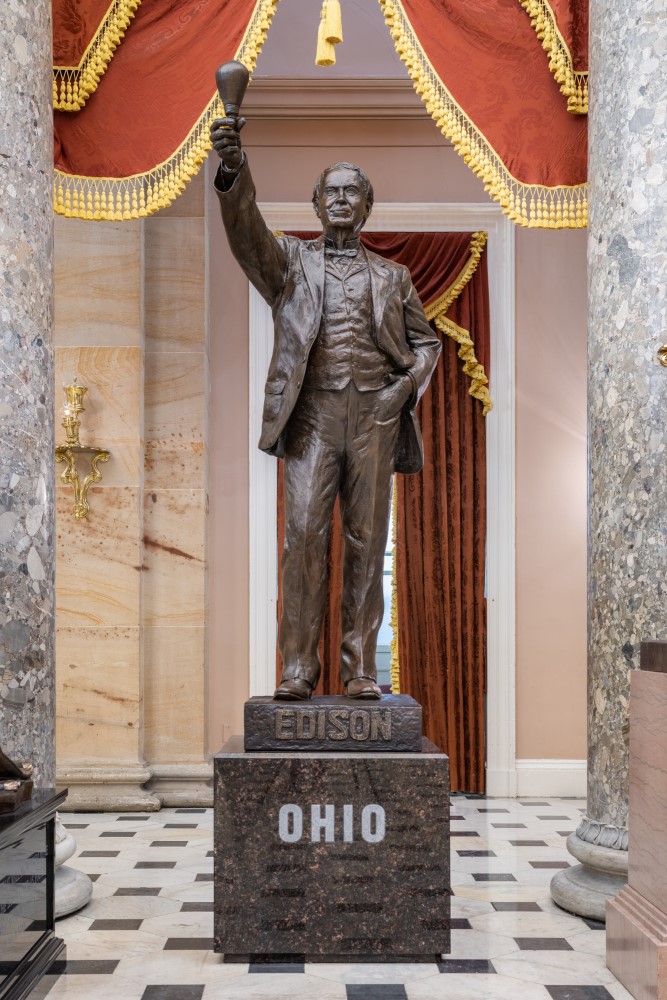
A bronze statue of Thomas Edison by artist Alan Cottrill was unveiled at the U.S. Capitol as part of the Capitol’s National Statuary Hall Collection. Edison replaces a statue of William Allen that was unveiled in 1887.
2021
Senator Sherrod Brown became chairman of the Senate Committee on Banking, Housing, and Urban Affairs, a position he held until January 3, 2025.
2024

Senator J.D. Vance was elected vice president of the United States. He resigned his Senate seat effective January 10, 2025.